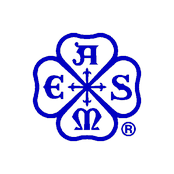All employees of Aerex Industries are responsible for complying with the requirements of quality standards as specified in our Quality Assurance Manuals. Management is responsible for performing activities that ensure these standards are followed and maintained. A dedicated Quality Assurance/Quality Control Manager, who supports Management and has unencumbered access to Aerex executives, has the authority for the administration of the company's quality assurance standards. The QA/QC Manager has complete authority to identify quality problems; to initiate, recommend, and provide solutions; to verify implementation of solutions; and to ensure that further processing, delivery, installation, or use is controlled until proper disposition of a nonconformance, deficiency, or unsatisfactory condition has occurred. In addition, personnel are encouraged to identify new ideas for improving products, processes, and services. Also, when quality or safety problems occur, all personnel have the responsibility and authority to take necessary corrective actions, including the stoppage of work, when such action is warranted. When problems or differences of opinion involving quality or safety cannot be resolved within a timely manner, employees will bring the issue to the attention of the QA/QC Manager who will escalate the issue for final resolution.




